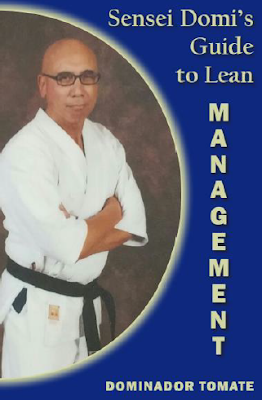Everyone wants to succeed. As a business, we like making money and hate losing it.
This short course will take you through a journey of learning that is adventurous, exciting and, frankly, challenging. It's filled with words and concepts that normal people do not use everyday, almost like learning a new language.
Yellow Belt Course
Lean Six Sigma
Friday, August 14, 2020
Lesson 2 - A Little History
Before we go into what Lean Six Sigma is, I'd like to provide you with a short history.
Lean Six Sigma, again a Best Practice, is identified as Scientific Management. It started at the turn of the 20th century where Frederick Winslow Taylor drafted his book The Principles of Scientific Management. He is the Father of Modern Scientific Management.
Lean Six Sigma, again a Best Practice, is identified as Scientific Management. It started at the turn of the 20th century where Frederick Winslow Taylor drafted his book The Principles of Scientific Management. He is the Father of Modern Scientific Management.
Lesson 3 - A Holistic Approach to Business Management
Lean and Six Sigma are both Total Quality Management Systems that improves production, efficiency, effectiveness and profitability. They are practiced internationally where Lean targets waste and focuses on behavior, mindset and culture and is known for its use of Japanese terminology, while Six Sigma targets defects and its causes by collecting facts and data and, through statistical analysis, develops strategies to achieve and maintain a 3.4 defects per million standard.
Lesson 4 - Kaizen vs Problem Statements
Kaizen in Japanese means “good change”. It’s associated with continuous improvement that drives TPS and Lean.
Kaizen is not only a method that creates changes, but it fosters a mindset that all work and has quality built in. Instead of waiting till the end of the job when the product or service is inspected, the operator not only does the task correctly, first time every time, but the product does not leave his station without it meeting 100 percent customer satisfaction.
Lesson 5 - Lean Five vs y(f)x
Be sure to get a cup of coffee because this is going to be a long lesson. It will once again site the differences of these ideas and categorized as a Lean or Six Sigma practice.
Lean Five Guiding Principles
You’ll start to learn that Lean is made up of five ideas or as stated above five guiding principles; and they are simple and easy to remember. However, don’t be deceived because the concepts as they are applied flies off to so many directions that it’ll make your head spin. I’ve studied and researched these principles for years and read thousands (yes, maybe even more) pages that discussed and probed deep into the possibilities.Lesson 6 - Value Stream vs SIPOC
Process Maps: Lean Value Stream Map vs Six Sigma SIPOC

Example of Flow Chart
Lesson 7 - PDCA vs DMAIC
PDCA and DMAIC are critical path paradigms used by Lean and Six Sigma. PDCA is associated with Lean while DMAIC is exclusive to Six Sigma.
These two acronyms are used extensively in the Lean Six Sigma process and it would be wise to remember what they are and how they are used in structuring strategies for continuous improvement and problem statement resolutions.
These two acronyms are used extensively in the Lean Six Sigma process and it would be wise to remember what they are and how they are used in structuring strategies for continuous improvement and problem statement resolutions.
Lesson 10 - Lean and Six Sigma References
The following is s short list of term and tools you'll come upon in later studies and applications.
I've listed them down as references.
I've listed them down as references.
Yellow Belt Simple Quiz
Yellow Belt Simple Quiz
To take the test, simply send your answers via email to domitomate@gmail.com. List numbers down with your selections. For example:
1. B
2. C
3. A
and so forth
And once you pass, you will be issued a Certificate!
To take the test, simply send your answers via email to domitomate@gmail.com. List numbers down with your selections. For example:
1. B
2. C
3. A
and so forth
And once you pass, you will be issued a Certificate!
Thursday, August 13, 2020
Lean Six Sigma Manual
Though you've picked up a lot of information in the last 10 lessons, the following link takes you to a book I wrote that was used for this course.


Subscribe to:
Comments (Atom)

